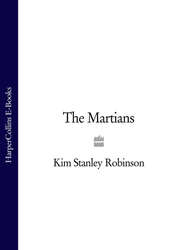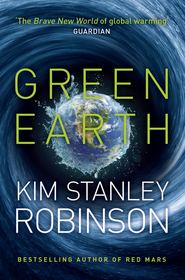По всем вопросам обращайтесь на: info@litportal.ru
(©) 2003-2024.
✖
Fifty Degrees Below
Автор
Год написания книги
2018
Настройки чтения
Размер шрифта
Высота строк
Поля
He needed to know more. Already he wished Caroline would call again. He wanted to talk to everyone implicated in this: Yann Pierzinski – meaning Marta too, which would be hard, terrible in fact, but Marta had moved to Atlanta with Yann and they lived together there, so there would be no avoiding her. And then Francesca Taolini, who had arranged for Yann’s hire by a company she consulted for, in the same way Frank had hoped to. Did she suspect that Frank had been after Yann? Did she know how powerful Yann’s algorithm might be?
He googled her. Turned out, among many interesting things, that she was helping to chair a conference at MIT coming soon, on bioinformatics and the environment. Just the kind of event Frank might attend. NSF even had a group going already, he saw, to talk about the new federal institutes.
Meet with her first, then go to Atlanta to meet with Yann – would that make his stock in the virtual market rise, triggering more intense surveillance? An unpleasant thought; he grimaced.
He couldn’t evade most of this surveillance. He had to continue to behave as if it wasn’t happening. Or rather, treat his actions as also being experiments in the sensitivity of the surveillance. Visit Taolini and Pierzinski, sure, and see if that gave his stock a bump. Though he would need detailed information from Caroline to find out anything about that.
He e-mailed the NSF travel office and had them book him flights to Boston and back. A day trip ought to do it.
Some mornings he woke to the sound of rain ticking onto his roof and the leaves. Dawn light, muted and wet; he lay in his sleeping bag watching grays turn silver. His roof extended far beyond the edges of his plywood floor. When he had all the lines and bungee cords right, the clear plastic quivered tautly in the wind, shedding its myriad deltas of water. Looking up at it, Frank lay comfortably, entirely dry except for that ambient damp that came with rain no matter what one did. Same with all camping, really. But mostly dry; and there he was, high in the forest in the rain, in a rain forest canopy, encased in the splashing of a million drips, and the wet whoosh of the wind in the branches, remaining dry and warm watching it all. Yes, he was an arboreal primate, lying on his foam pad half in his sleeping bag, looking through an irregular bead curtain of water falling from the edge of his roof. A silvery green morning.
Often he heard the other arboreal primates, greeting the day. These days they seemed to be sleeping on the steep slope across the creek from him. The first cry of the morning would fill the gorge, low and liquid at first, a strange cross between siren and voice. It never failed to send a shiver down his spine. That was something hardwired. No doubt the hominid brain included a musical capacity that was not the same as its language capacity. These days people tended to use their musical brains only for listening, thus missing the somatic experience of making it. With that gone the full potential of the experience was lost. ‘Oooooop!’ Singing, howling; it all felt so good. ‘Ooooh-oooooooooooo-da.’
Something else to consider writing about. Music as primate precursor to language. He would add it to his list of possible papers, already scores if not hundreds of titles long. He knew he would never get to them, but they ought to be written.
He had extended his roof to cover the cut in the railing and floor through which he dropped onto his rope ladder, and so he was able to descend to the ground without getting very wet. Onto the forest floor, not yet squishy, out to his van, around D.C. on the Beltway, making the first calls of the day over his headset. Stop in at Optimodal, singing under his breath, ‘I’m optimodal, today – optimodal, today!’ Into the weight room, where, it being six AM, Diane was working on one of the leg machines. Familiar hellos, a bit of chat about the rain and her morning calls, often to Europe to make use of the time difference. It was turning out to be a very cool summer in Europe, and rainstorms were being welcomed as signs of salvation; but the environmental offices there were full of foreboding.
Shower, change, walk over to NSF with Diane. Amazing how quickly people developed sets of habits. They could not do without them, Frank had concluded. Even his improvised life was full of them. It might be said that now he had an array of habits that he had to choose from, a kind of menu. Up to his office, check phone messages and e-mail, get coffee, start on the messages that needed action, and the making of a daily Things To Do list out of the standing one on the whiteboard. Bit of breakfast when his stomach reminded him it was being neglected.
One of his Things To Do was to attend another of Diane’s meetings late that morning, this one attended by various division heads, including Anna, and some members of the Science Board.
Diane had been busy organizing her own sense of the climate problem, structuring it in the broadest terms possible. First, however, she had some good news to share; the appropriations committees in Congress had streamlined approval of two billion dollars for NSF to engage with climate issues as soon as possible. ‘They want us to take action, they said, but in a strictly scientific manner.’
Edgardo snorted. ‘They want a silver bullet. Some kind of technical fix that will make all the problems go away without any suffering on Wall Street.’
‘That doesn’t matter,’ Diane said. ‘They’re funding us, and we’ll be making the determinations as to what might work.’
She clicked to the first of her Power Point pages. ‘Okay. Global environmental problem, having to do with habitat degradation and a hundred parts per million rise in atmospheric carbon, resulting in species loss and food insecurity. You can divide it into land, ocean, and atmosphere. On land, we have loss of topsoil, desertification, and in some places, flooding. In the oceans, we have sea level rise, either slow because of general warming, already happening, or else fast, as a result of the West Antarctic ice sheet detaching. Probability of the Antarctic ice sheet coming off is very hard to calculate. Then also thermohaline circulation, in particular the North Atlantic stall in the great world current. Also fisheries depletion, also coral reef loss. The oceans are more of a source of trouble than we’re used to thinking. In the atmosphere, carbon dioxide build-up of course, very well known, but also methane and other more powerful greenhouse gases.’
She clicked to the next slide. ‘Let’s start with atmosphere, particularly the carbon dioxide aspect. Now up to 400 parts per million, from 280 before the industrial revolution. Clearly, we need to slow down how much CO2 we’re putting into the atmosphere, despite the industrialization of China, India, and many other places. Then also, it would be interesting to see if we could remove and sequester from the atmosphere any significant amounts of CO2 that are already up there. Drawdown studies, these are sometimes called.
‘What’s putting carbon into the atmosphere? The bulk of it comes from energy production and cars. We’ve been burning fossil fuels to create electricity and to move us and our stuff around. If we had cleaner technologies to create electricity and to power transport, we would put less carbon in the air. So, we need cleaner cars and cleaner energy production. There’s been a lot of work done on both fronts, with some very exciting possibilities explored, but bottom line, the oil and car industries are very big, and they work together to obstruct research and development of cleaner technologies that might replace them. Partly because of their lobbying here in D.C., research into cleaner technologies is under-funded, even though some of the new methods show real promise. Some are even ready to go, and could make a difference very rapidly, but are still too expensive to compete financially, especially given the initial costs in installing a new infrastructure, whatever it might be.
‘So. Given this situation, I think we have to identify the two or three most promising options in each big carbon area, energy and transport, and then immediately support these options in a major way. Pilot projects, maybe competitions with prizes, certainly suggested tax structures and incentives to get private enterprise investing in it.’
‘Make carbon credits really expensive,’ Frank said.
‘Make gas really expensive,’ Edgardo said.
‘Yes. These are more purely economic or political fixes. We will run into political resistance on those.’
‘You’ll run into political resistance on all these fronts.’
‘Yes. But we have to work for everything that looks like it will help, political resistance or not. More and more I’m convinced that this will have to be a multi-disciplinary effort, in the largest sense. The front is very broad, and we can’t avoid the awkward parts just because they’ve got difficulties. I was just mentioning them.’
She clicked to her next slide. ‘Cars. It takes about ten years to replace the fleet of cars on the road, so we need to start now if anything is to be done in a relevant time period. Fuel cell cars, electric, hydrogen. Also, there are some things we could do right away with the current models. Increase fuel efficiency, of course. Could be legislated. Also, fuel flexibility. There is a device that could be added to every conventional car that would enable it to burn gas, ethanol or methanol. Adds only a couple hundred dollars per vehicle. It too could be legislated to be a requirement. This would have a national security aspect, which is to say, if we are unexpectedly cut off from foreign oil supplies, everyone could still burn ethanol in their cars, and we wouldn’t be completely crippled.’
‘Ethanol still puts carbon into the atmosphere,’ Frank pointed out.
‘Yes, but it’s made from biological material that has been drawn down from the atmosphere when the plant material grew. On the plant’s death it was going to rot and enter the atmosphere as carbon anyway. If you burn it and put it in the atmosphere, you can then also draw it back down in the plants that you use for later fuel, so that it becomes a closed-loop system where there is no net gain of carbon in the atmosphere, even though you have moved lots of transport. Whereas burning oil and coal adds new carbon to the atmosphere, carbon that was very nicely sequestered before we burned it. So ethanol is better, and it’s available right now, and works in current cars. Most of the other technologies for cleaner power are a decade away in terms of research and development. So it’s nice that we have something we can deploy immediately. A bridge technology. Clearly this should happen right now.’
‘If it weren’t for the political obstructions.’
‘Yes. Maybe this is an issue where we have to try to educate Congress, the administration and the people. Think about how we might do that. But now, on to cleaner energy production.’ Diane clicked slides again. ‘Here again we already have proven options, in the form of all the renewables, many of them working and ready to be expanded. Wind, geothermal, solar, and so on.
‘The one with tremendous potential for growth is of course solar power. The technological difficulties in transferring sunlight to electricity are complicated enough that there are competing designs for improvement, still struggling to show superiority over the other methods. So one thing we can do is to help identify which ones to pursue with a big effort. Photovoltaic research, of course, but also we need to look at these flexible mirror systems, directing light to heatable elements that transform the heat into electricity. Further down the line, there is also the prospect of space solar, gathering the sunlight in space and beaming it down.’
‘Wouldn’t that require help from NASA?’
‘Yes, NASA should be part of this. A really big booster is a prerequisite for any conceivable space solar, naturally.’
‘And what about DOE?’
‘Well, perhaps. We have to acknowledge that some federal agencies have been captured by the industries they are supposed to regulate. Clearly the Department of Energy is one of these. They should have been taking the lead on clean energy, but they began as the Atomic Energy Commission, so for a while they would only look at nuclear, and now they are creatures of the oil industry. So they have been obstructions to innovation for many years. Whether that can change now, I don’t know. I suspect the only good that can come from them is some version of clean coal. If coal can be gasified, it’s possible its carbon and methane could be captured and sequestered before burning. That would be good, if they can pull it off. But beyond that, the unfortunate truth is that DOE is more likely to be one of the impediments to our efforts than a help. We will have to do what we can to engage them, and dance around any obstacles they might set up.’
She clicked again. ‘Now, carbon capture and sequestering. Here, the hope is that ways can be found to draw down some of the CO2 already in the atmosphere. That could be a big help, obviously. There are proven mechanical means to do this, but the scale of anything we could afford to build is much too small. If anything’s going to work, it almost certainly will have to be biological. The first and most obvious method here is to grow more plants. Reforestation projects are thus helpful in more ways than one, as stabilizing soil, restoring habitat, growing energy, and growing building materials, all while drawing down carbon. Poplars are often cited as very fast growers with a significant drawdown possibility.
‘The other biological method suggested would involve some hypothetical engineered biological system taking more carbon out of the atmosphere than it does now. This brings biotech into the game, and it could be a crucial player. It might have the possibility of working fast enough to help us in the short term.’
For a while they discussed the logistics of initiating all the efforts Diane had sketched out so far, and then Anna took over the Power Point screen.
She said, ‘Another carbon sequestration, in effect, would be to not burn oil that we would have using our current practices. Meaning conservation. It could make a huge difference. Since the United States is the only country living at American consumption levels, if we here decided to consume less, it would significantly reduce world consumption levels.’
She clicked to a slide titled Carbon Values. It consisted of a list of phrases:
• conservation, preservation (fuel efficiency, carbon taxes)
• voluntary simplicity
• stewardship, right action (religion)
• sustainability, permaculture
• leaving healthy support system for the subsequent generations
Edgardo was shaking his head. ‘This amishization, as the engineers call it – you know, this voluntary simplicity movement – it is not going to work. Not only are we fond of our comforts and toys, and lazy too, but there is a fifty billion dollar a year industry fighting any such change, called advertising.’
Anna said, ‘Maybe we could hire an advertising firm to design a series of voluntary simplicity ads, to be aired on certain cable channels.’
Edgardo grinned. ‘Yes, I would enjoy to see that, but there is a ten trillion-a-year economy that also wants more consumption. It’s like we’re working within the body of a cancerous tumor. It’s hopeless, really. We will simply charge over the cliff like lemmings.’
‘Real lemmings don’t actually run off cliffs,’ Anna quibbled. ‘People might change. People change all the time. It just depends on what they want.’
She had been looking into this matter, which she jokingly called macrobioinformatics: researching, refining and even inventing various rubrics by which people could evaluate their consumption levels quantitatively, with the idea that if they saw exactly what they were wasting, they would cut back and save money. The best known of these rubrics, as she explained, were the various ‘ecological footprint’ measurements. These had been originally designed for towns and countries, but Anna had worked out methods for households as well, and now she passed around a chart illustrating one method, with a statistical table that illustrated her earlier point that since Americans were the only ones in the world living at American consumption levels, any reduction here would disproportionately shrink the total world footprint.
‘The whole thing should be translated into money values at every step,’ Edgardo said. ‘Put it in the best way everyone in this culture can understand, the cost in dollars and cents. Forget the acreage stuff. People don’t know what an acre is anymore, or what you can expect to extract from it.’
‘Education, good,’ Diane said. ‘That’s already part of our task as defined. And it will help to get the kids into it.’











